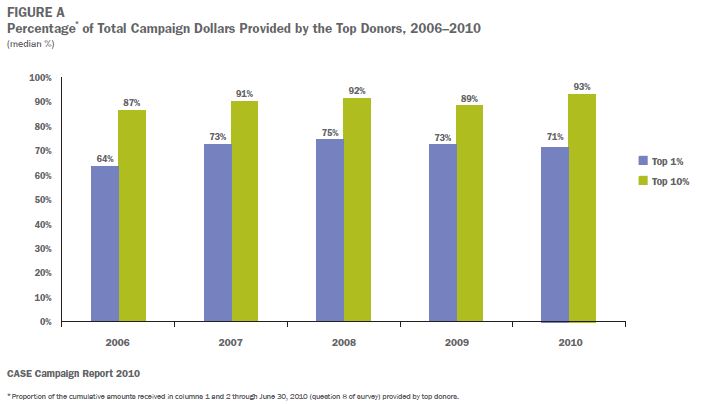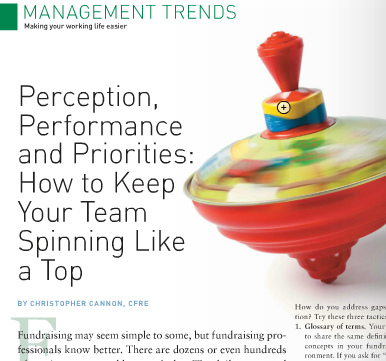Fundraising operations is tough business. You must carefully balance accuracy, speed, and volume issues. The details are mundane and the technology is complex. Last week, I had a chance to share 8 secrets to spinning like a top via the AFP webinar series. I had a lot of fun crafting the session. It was also challenging because there are more like 800 secrets to successful operations.
Here’s a summary of what I see as the dirty little secrets that, once known, can help your operations spin like a top:
- Not all data matter. We spend way too much time on record maintenance for the masses and not enough on our front-of-the-line constituents!
- Technology trickery. We fool ourselves into thinking that technology does everything for us. It’s just a tool. Databases don’s ask people for gifts. For more, click here.
- Easy to avoid. Analysis paralysis, particularly the millions of unnecessary ad hoc reports we seem determined to create each year as an industry, is easy to avoid. Pick your best reports and use them to make decisions, consistently.
- (Mis)Perception problems. We talk past one another and understand things differently. Once we realize that two smart people can view the same scenario differently, then respect each others’ vantage point, we can make real progress. I did a Prezi on this topic with my colleague Cassie Hunt last year; check it out.
- Conversions are easy. The act of converting data from one database to the other is the easy part. The hard part is that technology transitions take years, require multiple iterations of implementation efforts, and never really stop.
- Forecasting is undervalued. we don’t spend enough time looking into the future. For prospects, for proposal pipelines, for budgets, for staff growth…we generally get too caught up in what’s in front of us, at a huge overall cost.
- Power to the people. Our industry is suffering from turnover, often due to lack of training, weak salary levels, or a lack of trying to retain our folks. The costs here are tremendous, particularly if your operational institutional memory walks out the door. Here’s a good look at the issue by my colleague, Mark Marshall.
- Discipline, discernment, and delegation. If we exercised the 3 D’s in all operations areas, we would make substantial strides to spinning like a top.


